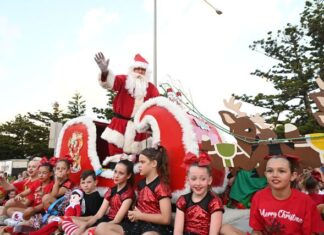Around all our different lagoons and waterways, there are quite a few birds that would fit the category of Waders.
These don’t go out in the water, swimming, fishing and diving. Usually they remain in the shallow water at the edge and seem to have no difficulty in sharing the area with members of other species as the illustration shows.
Here the Masked Lapwings, formerly known as Spur-winged Plovers, didn’t chase the much smaller Sandpiper that was foraging beside them.
A lot of these waders are migratory that join the local birds for part of the year.
The group of Plovers includes the Grey Plover, Pacific Golden Plover, Red-capped Plover, Hooded Plover, Oriental Plover and the Double-banded Plover. With the exception of the Hooded Plover, all the others listed, could be found at some time in our area.
Sanderlings, Sandpipers and Knots are smaller birds that we have along the coast periodically.
Another bird that could be added to this is the Bar-tailed Godwit. This bird is about 45cm in length.
I was checking out an area near our beach around the coastline from Yeppoon and came across a small group of these birds. As long as I didn’t get too close, they were quite happy to keep foraging in the sand and water.
There is a second Godwit called the Black-tailed, but I haven’t seen any of these although they are listed as being in the area.
Found all round the majority of the Australian coastline, there are three birds that look similar in appearance with a speckled brown on white plumage.
The largest is the Eastern Curlew at 60cm in length, next is the Whimbrel at around 45cm and the smallest, the Little Curlew being 35cm.






